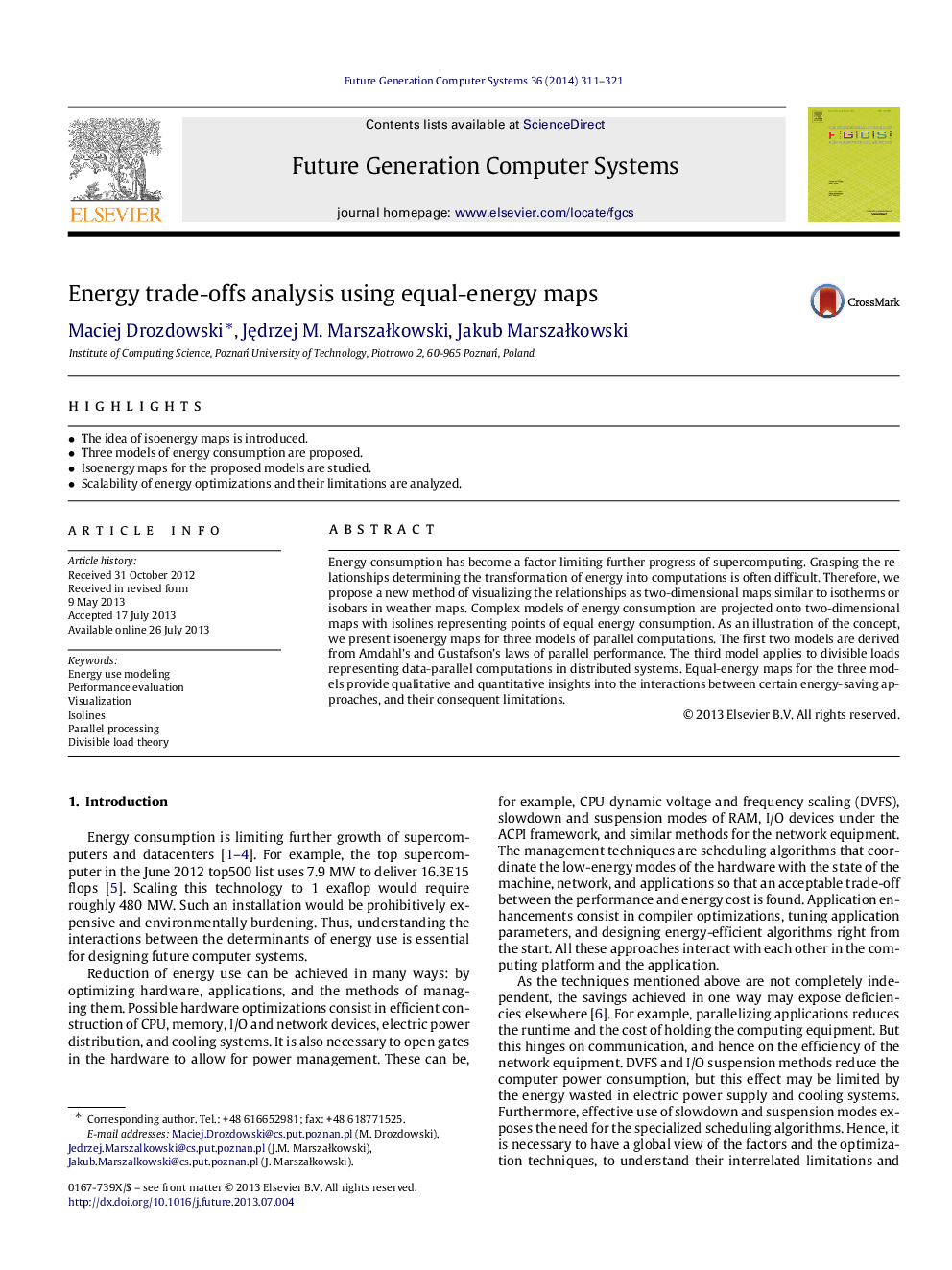| Article ID | Journal | Published Year | Pages | File Type |
|---|---|---|---|---|
| 425265 | Future Generation Computer Systems | 2014 | 11 Pages |
•The idea of isoenergy maps is introduced.•Three models of energy consumption are proposed.•Isoenergy maps for the proposed models are studied.•Scalability of energy optimizations and their limitations are analyzed.
Energy consumption has become a factor limiting further progress of supercomputing. Grasping the relationships determining the transformation of energy into computations is often difficult. Therefore, we propose a new method of visualizing the relationships as two-dimensional maps similar to isotherms or isobars in weather maps. Complex models of energy consumption are projected onto two-dimensional maps with isolines representing points of equal energy consumption. As an illustration of the concept, we present isoenergy maps for three models of parallel computations. The first two models are derived from Amdahl’s and Gustafson’s laws of parallel performance. The third model applies to divisible loads representing data-parallel computations in distributed systems. Equal-energy maps for the three models provide qualitative and quantitative insights into the interactions between certain energy-saving approaches, and their consequent limitations.
